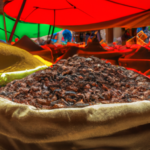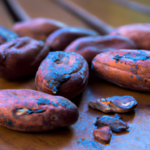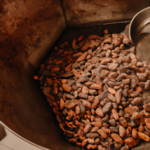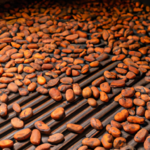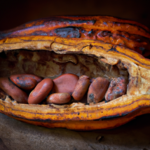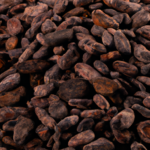Raw Food Ingredients
How To Eat Cacao Bean Raw
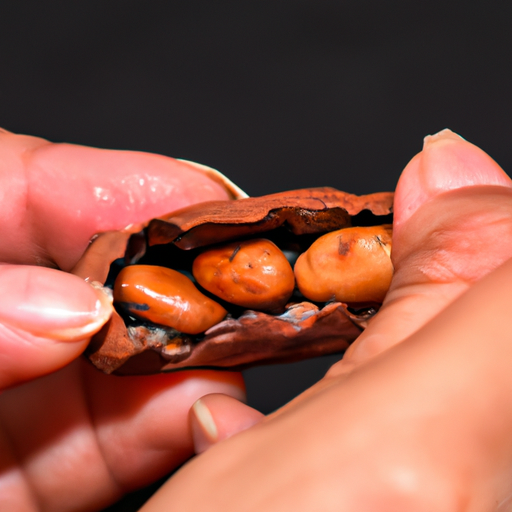
Imagine indulging in the rich, decadent flavors of a dark chocolate bar, allowing each bite to envelop your taste buds in velvety sweetness. Now, picture experiencing that same level of indulgence in its purest form – raw cacao beans.
As a lover of all things chocolate, I was intrigued by the idea of eating cacao beans straight from the source. So, I set out on a journey to discover the secrets of enjoying these little powerhouses of flavor and health benefits.
In this article, I will guide you through the process of eating cacao beans raw, from sourcing and selecting the best beans to cleaning and preparing them for consumption. We will explore the optimal ways to roast, remove the shell and nibs, and grind the beans into a paste.
Join me as we dive into the world of raw cacao and unlock its full potential.
Key Takeaways
- Eating raw cacao beans provides numerous health benefits.
- Raw cacao beans are rich in antioxidants and help combat oxidative stress.
- Consuming raw cacao beans reduces the risk of chronic diseases.
- Certain compounds in raw cacao beans can boost mood and promote happiness.
Understanding Cacao Beans
To understand how to eat cacao beans raw, it is important to first have a clear understanding of what cacao beans actually are. Cacao beans are the seeds of the cacao tree, scientifically known as Theobroma cacao. They serve as the raw material used to produce chocolate.
To fully appreciate the unique flavors and health benefits of raw cacao beans, it is crucial to understand the cultivation process of cacao. Cacao trees thrive in tropical regions and require specific conditions, such as shade and well-drained soil, to grow successfully.
It is also important to differentiate between cacao and cocoa, as they are often confused. Cacao refers to the unprocessed, raw form of the bean, while cocoa is the processed version that undergoes roasting and grinding.
With a basic understanding of cacao beans in place, the next step is to learn about sourcing and selecting high-quality cacao beans. This is essential to ensure a delightful raw cacao experience.
Sourcing and Selecting High-Quality Cacao Beans
When searching for the best cacao beans, picture yourself in a lush rainforest, surrounded by towering cacao trees, as you carefully handpick the finest, sun-kissed pods. Sourcing high-quality cacao beans involves various techniques to ensure exceptional flavor profiles. One important factor is the origin of the beans, as different regions produce distinct flavors. For example, beans from Madagascar offer fruity and citrusy notes, while those from Venezuela provide a rich and nutty taste. Additionally, the fermentation process greatly influences the flavor development. Properly fermented beans develop complex flavors, while under-fermented ones may taste bitter or astringent. To help you understand the sourcing techniques and flavor profiles of cacao beans, refer to the table below:
| Region | Flavor Profile |
|---|---|
| Madagascar | Fruity, Citrusy |
| Venezuela | Rich, Nutty |
| Ecuador | Floral, Earthy |
Understanding these flavor profiles will guide you in selecting the perfect cacao beans for your raw consumption. In the subsequent section, we will explore the crucial steps of cleaning and preparing cacao beans.
Cleaning and Preparing Cacao Beans
To fully savor the exquisite flavors of cacao, it’s time to roll up your sleeves and embrace the art of cleaning and preparing these precious pods. Cleaning techniques for cacao beans are crucial to remove any impurities and ensure optimal taste.
Start by gently rinsing the beans under cool running water, removing any dirt or debris. Then, carefully dry them using a clean towel or paper towels. It’s important to store the cleaned beans in a cool, dark, and dry place to maintain their quality. Airtight containers or vacuum-sealed bags are ideal for preserving the flavors.
Once the cacao beans are properly cleaned and stored, it’s time to move on to the next step: roasting. Roasting the beans enhances their flavors and brings out their rich aroma, creating the perfect foundation for a delicious cacao experience.
Roasting Cacao Beans for Optimal Flavor
Once you’ve cleaned and prepared the cacao beans, it’s time to embrace the art of roasting, transforming them into a culinary masterpiece that bursts with flavors like a symphony of harmonious notes.
Roasting cacao beans is a crucial step that enhances the flavor profiles and brings out the rich complexities hidden within. There are various roasting techniques to consider, each offering a unique outcome.
For a lighter flavor, a shorter roasting time at lower temperatures is ideal. This preserves the delicate fruity and floral notes of the beans. On the other hand, a longer roast at higher temperatures creates a bolder, more robust flavor profile with hints of caramel and nuttiness.
Experimenting with different roasting times and temperatures allows you to discover your preferred flavor profile.
Once the beans are roasted to perfection, we can move on to the next section about removing the shell and nibs.
Removing the Shell and Nibs
After the roasting process, you’re left with beautifully fragrant cacao beans that are ready to be cracked open, revealing the hidden treasure within.
Removing the shell and nibs from cacao beans can be done using a few different techniques. One common method is to gently tap the beans with a hammer or mallet, allowing the shell to crack and easily separate from the nibs.
Another technique involves using a sharp knife to carefully slit the shell, allowing you to peel it away from the nibs.
Once the shell is removed, you are left with the cacao nibs, which are packed with nutritional value. These nibs contain fiber, antioxidants, and minerals such as magnesium, iron, and calcium. They also provide a rich source of flavonoids, which have been linked to various health benefits.
Now that the shell is removed and the nutritious nibs are exposed, it’s time to move on to the next step of grinding the cacao beans into a paste.
Grinding Cacao Beans into a Paste
Now that you’ve unveiled the treasure inside, it’s time to unleash the full potential of those delectable morsels by transforming them into a luscious, velvety paste. Grinding cacao beans into a paste requires precision and the right techniques to extract the rich flavors and smooth texture.
Here are three grinding techniques that can help you achieve the perfect cacao paste:
-
Hand grinding with a mortar and pestle: This traditional method allows you to control the consistency and texture of the paste.
-
Using a blender or food processor: This modern technique provides a quick and efficient way to grind the beans into a smooth paste.
-
Using a specialized grinder: This tool ensures that the beans are ground to a fine consistency, resulting in a professional-grade cacao paste.
Besides using cacao paste in recipes, it also has alternative uses, such as making homemade chocolate bars or adding it to smoothies for a rich, chocolatey flavor.
Transitioning to the subsequent section about using cacao paste in recipes, let’s explore the various culinary wonders it can create.
Using Cacao Paste in Recipes
Let’s dive into the world of culinary creativity and explore the myriad of delicious possibilities that can arise when using velvety cacao paste in recipes.
Cacao paste is a versatile ingredient that not only adds a rich and decadent flavor to dishes but also offers numerous health benefits. Made from ground cacao beans, cacao paste is packed with antioxidants, minerals, and vitamins that promote overall well-being.
Incorporating cacao paste into recipes allows you to enjoy its unique taste while reaping its nutritional rewards. From indulgent desserts like chocolate truffles and brownies to savory dishes like mole sauce and chili, the options are endless.
You can also use cacao paste as a substitute for chocolate in baking or melt it down to create a luscious hot chocolate drink. Exploring the health benefits of raw cacao is the next step in uncovering the true potential of this superfood.
Exploring the Health Benefits of Raw Cacao
Unleash the full potential of velvety cacao paste by delving into its numerous health benefits. Raw cacao, derived from the Theobroma cacao tree, offers a wealth of nutritional value. Here are four key reasons why incorporating raw cacao into your diet can be beneficial:
-
High antioxidant content: Raw cacao is a powerhouse of antioxidants, such as flavonoids, which help combat oxidative stress and reduce the risk of chronic diseases.
-
Mood-enhancing properties: The presence of certain compounds like phenethylamine and anandamide in raw cacao can potentially boost mood and promote feelings of happiness.
-
Cardiovascular support: Research suggests that the flavonoids in raw cacao may improve heart health by reducing inflammation, lowering blood pressure, and improving blood flow.
-
Nutrient-dense superfood: Raw cacao is packed with essential minerals like magnesium, iron, and zinc, providing a natural source of these vital nutrients.
Understanding the health benefits of raw cacao sets the stage for exploring tips on how to enjoy the pure goodness of cacao beans.
Tips for Enjoying Raw Cacao Beans
Indulge in the rich, velvety goodness of raw cacao beans and discover a world of delectable ways to savor their natural flavors. Here are some tips to enhance your experience and reap the numerous health benefits of these nutrient-packed beans.
| Tips for Enjoying Raw Cacao Beans | Benefits |
|---|---|
| 1. Pair with nuts or fruits | Boosts antioxidant intake |
| 2. Grind into powder | Enhances versatility for recipes |
| 3. Use as a topping | Adds crunch and texture to desserts |
Pairing raw cacao beans with nuts or fruits not only creates a delightful combination of flavors but also increases the intake of antioxidants. Grinding the beans into powder form allows for easier incorporation into various recipes, such as smoothies or baked goods. Lastly, using raw cacao beans as a topping adds a satisfying crunch and texture to desserts. By following these tips, you can fully enjoy the raw cacao beans’ natural goodness and harness their potential health benefits.
Frequently Asked Questions
How many cacao beans should I eat in one sitting?
In one sitting, I should eat a moderate amount of cacao beans to enjoy their benefits. It’s important to prepare the beans for consumption by roasting them, removing the shells, and grinding them into a powder.
Can I eat the cacao bean shell?
Yes, you can eat the cacao bean shell. However, it is usually removed before consumption. The shell does not provide significant nutritional benefits and is too tough to eat. There are various cacao bean recipes available to enjoy its nutritional benefits.
Are there any potential side effects of eating raw cacao beans?
There are potential side effects of eating raw cacao beans. They contain caffeine and theobromine, which can cause jitteriness, increased heart rate, and sleep disturbances. It’s important to consume them in moderation and follow the recommended dosage.
Can I store raw cacao beans for a long period of time?
Yes, raw cacao beans can be stored for a long period of time if properly preserved. It is important to keep them in a cool, dry place, away from sunlight and moisture, to maintain their freshness and prevent spoilage.
Can I eat raw cacao beans if I have a chocolate allergy?
Ironically, having a chocolate allergy doesn’t mean you can’t enjoy raw cacao beans. While they contain similar compounds, some people with chocolate allergies can tolerate cacao. However, it’s best to consult a healthcare professional for alternative options.
Can I Eat Cacao Beans Raw and What Are the Benefits?
Yes, you can eat raw cacao beans. They are packed with antioxidants, fiber, and minerals. Eating raw cacao beans can improve your mood, boost brain function, and lower the risk of heart disease. For a complete eating raw cacao beans tutorial, consult a nutrition expert or follow a reliable recipe.
Conclusion
In conclusion, indulging in the rich and flavorful world of raw cacao beans is a truly enlightening experience. By sourcing high-quality beans, cleaning and roasting them with care, and grinding them into a luscious paste, one can unlock the full potential of cacao’s natural goodness.
Not only does raw cacao offer a myriad of health benefits, but it also serves as a versatile ingredient in various recipes. So, go ahead and delve into the delectable world of raw cacao, and let its ancient charm transport you to a realm of pure delight.
Remember, the journey to culinary bliss begins with a single bite!
Rachael, the Editor in Chief of RachaelsRawFood.com, is an inspiring and passionate individual who has dedicated her life to promoting the benefits of a raw food lifestyle. Known for her vibrant and energetic personality, Rachael has built a strong online presence that has transformed her personal journey into a thriving community of raw food enthusiasts.
Raw Food Ingredients
How Much Caffeine in Cocoa?
Not all cocoa products are created equal when it comes to caffeine content – discover which one might surprise you!
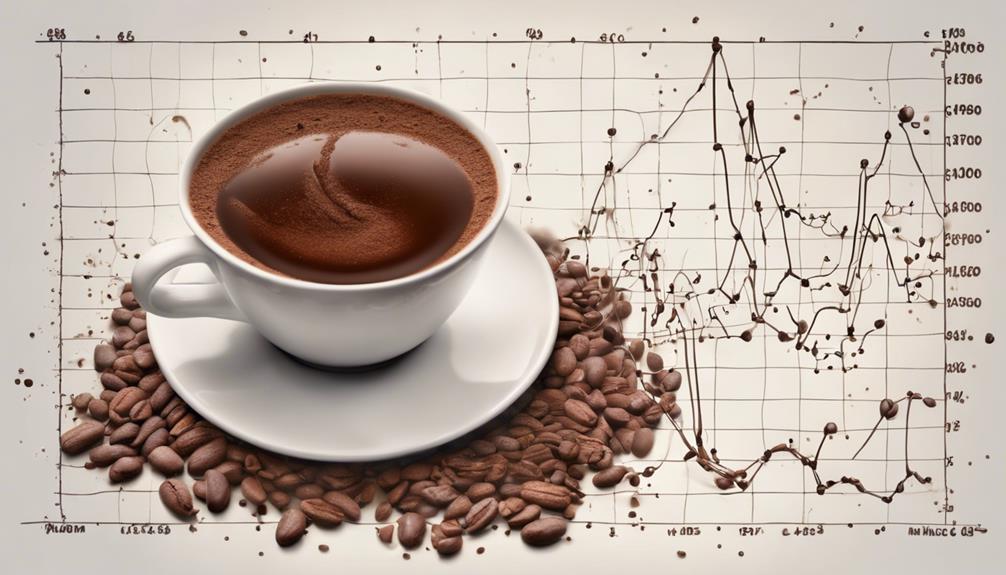
When evaluating the caffeine levels in cocoa, it’s important to recognize that dark chocolate contains around 43 mg of caffeine per 100 grams due to its high cocoa solid content. Dark chocolate has a higher caffeine content compared to milk or white chocolate. This means that consuming dark chocolate in moderation can assist in managing your caffeine intake. On the other hand, milk chocolate has around 20 mg of caffeine per 100 grams while white chocolate is caffeine-free. Cocoa powder, commonly used in baking and beverages, contains a substantial 230 mg of caffeine per 100 grams. Being aware of these distinctions in chocolates can help you make informed decisions about your caffeine consumption.
Key Takeaways
- Caffeine content in cocoa varies based on cocoa solid concentrations.
- Unsweetened cocoa powder can contain around 230 mg of caffeine per 100 grams.
- Roasting cocoa solids influences the final caffeine content in cocoa products.
- Dark chocolate, with high cocoa solid content, has more caffeine than milk chocolate.
- Moderate consumption of cocoa products helps manage caffeine intake.
Caffeine Content in Dark Chocolate
Dark chocolate boasts a caffeine content of approximately 43 mg per 100 grams, mainly deriving from its higher cocoa solid composition. When we indulge in this decadent treat, we aren't only savoring its rich cocoa flavor but also a subtle caffeine kick. Compared to milk or white chocolate, dark chocolate contains a higher amount of caffeine.
Please bear in mind that moderate consumption of dark chocolate can assist individuals in managing their caffeine intake effectively. The caffeine levels in dark chocolate are about one-fourth of what you'd find in a standard cup of coffee. So, if you're looking for a milder caffeine boost, a piece of dark chocolate might just do the trick without the jitters that sometimes accompany a strong cup of coffee.
Enjoy your dark chocolate in moderation, savoring both its taste and the gentle pick-me-up it provides.
Caffeine Levels in Milk Chocolate
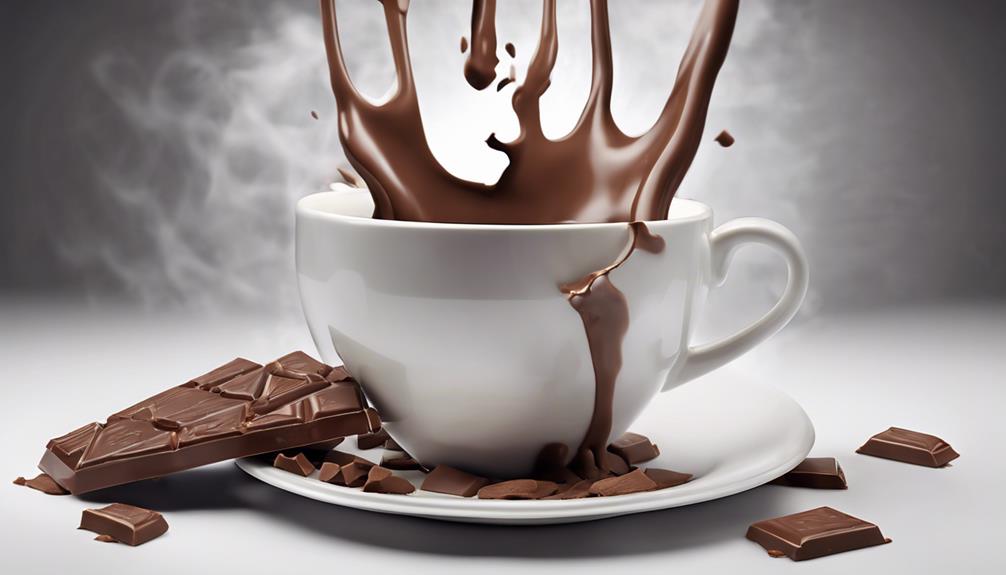
Milk chocolate, known for its creamy texture and sweet flavor, contains a modest caffeine content of approximately 5.6 mg per ounce, as indicated by USDA data. Unlike dark chocolate, milk chocolate has a lighter color due to lower cocoa content, resulting in reduced caffeine levels.
The delightful creamy taste in milk chocolate comes from a harmonious blend of cocoa and milk powder. While dark chocolate boasts higher caffeine content, milk chocolate remains a popular choice for those seeking a sweet treat with minimal caffeine intake.
Caffeine Presence in White Chocolate
With its unique composition excluding cocoa solids, white chocolate stands out as a caffeine-free alternative to its darker counterparts. White chocolate is crafted from a blend of cocoa butter, milk powder, sugar, and vanilla, making it a delectable treat without the stimulating effects of caffeine. For individuals sensitive to caffeine, white chocolate offers a creamy texture and indulgent flavor without the worry of unwanted side effects. This makes it a popular choice for desserts among those looking to steer clear of caffeine in their sweet treats.
Compared to dark chocolate, which contains cocoa solids and hence caffeine, white chocolate provides a caffeine-free option for those seeking a more mellow indulgence. So, if you're in the mood for a luscious and smooth chocolate experience without the buzz of caffeine, white chocolate is the perfect choice for your next dessert delight.
Impact of Cocoa Solids on Caffeine
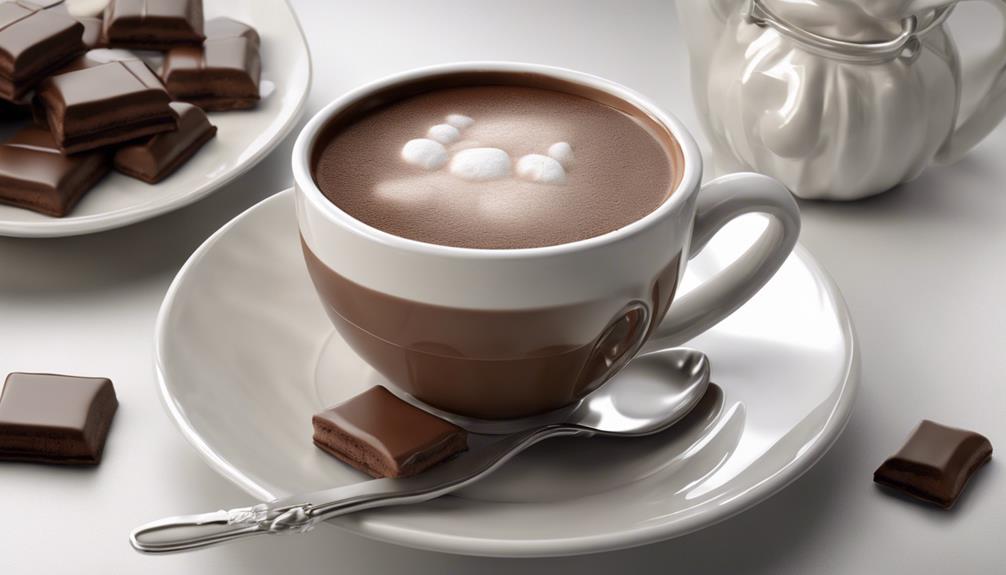
In determining the caffeine levels in cocoa products, the percentage of cocoa solids plays a significant role. Here are some key points about the impact of cocoa solids on caffeine content:
- Caffeine Derivation: The caffeine content in cocoa primarily comes from cocoa solids, making it an important factor in determining the overall caffeine levels in cocoa-based products.
- Dark Chocolate: Dark chocolate, known for its higher cocoa solid content, tends to contain more caffeine compared to milk or white chocolate varieties due to this higher concentration.
- Unsweetened Cocoa Powder: A 100g serving of unsweetened cocoa powder can contain around 230mg of caffeine, reflecting the impact of the high cocoa solid content in this form.
- Health Benefits: The roasting process of cocoa solids not only affects the flavor profile but also influences the caffeine content, contributing to the potential health benefits associated with consuming cocoa products like hot cocoa.
Comparing Caffeine in Different Chocolates
Comparing the caffeine content in different chocolates reveals varying levels based on their cocoa solid concentrations. Dark chocolate contains about 43 mg of caffeine per 100 grams, making it a stronger caffeinated option compared to milk chocolate, which only has around 20 mg per 100 grams.
Surprisingly, white chocolate, derived from cocoa butter, doesn't contain any caffeine at all. For those seeking a more potent caffeine kick, cocoa powder is the way to go, boasting a high concentration of 230 mg per 100 grams.
The amount of caffeine in chocolate products is closely linked to the cocoa solid content, with dark chocolate containing the highest levels. So, the next time you're craving a chocolate treat but also need a little energy boost, opt for dark chocolate to get the most caffeine per bite.
Frequently Asked Questions
Is There More Caffeine in Cocoa Than Coffee?
There's more caffeine in cocoa than in coffee. Cocoa powder packs 230 mg per 100 grams, surpassing most coffee varieties. Dark chocolate has even more caffeine due to higher cocoa content. It's a rich, unique energy source.
Is There a Lot of Caffeine in Hot Cocoa?
There isn't a lot of caffeine in hot cocoa. It depends on the brand and recipe. Starbucks hot chocolate has around 25 mg per serving, while basic mixes have about 5 mg. The amount of cocoa powder used influences the caffeine content.
Is There Caffeine in Hershey's Cocoa?
Absolutely, Hershey's Cocoa does contain caffeine, but it's not overwhelming. It adds a delightful hint of energy in each spoonful. Perfect for baking or a cozy cup of hot chocolate. Just the right amount!
Is Cocoa a Stimulant Like Caffeine?
Cocoa stimulates like caffeine due to its theobromine content. Decaf versions offer a solution for caffeine-sensitive folks. Options include regular cocoa with caffeine, Dutch-processed cocoa with less, and decaf cocoa with reduced caffeine while keeping healthful compounds.
What are the potential health effects of consuming high levels of caffeine in cocoa?
Unveiling cocoa caffeine levels can lead to potential health effects of excessive consumption. High levels of caffeine in cocoa may contribute to insomnia, nervousness, and fast heartbeat. It can also cause gastrointestinal discomfort and exacerbate anxiety disorders. Moderation in consuming caffeinated cocoa products is recommended for overall health.
Conclusion
To sum up, the caffeine content in cocoa varies depending on the type of chocolate. Dark chocolate typically has the highest caffeine levels, followed by milk chocolate and white chocolate. The amount of cocoa solids in the chocolate also affects the caffeine content.
Remember, just like different chocolates have different levels of caffeine, we all have unique strengths and abilities. Embrace your individuality and always aim for balance in everything you do.
Rachael, the Editor in Chief of RachaelsRawFood.com, is an inspiring and passionate individual who has dedicated her life to promoting the benefits of a raw food lifestyle. Known for her vibrant and energetic personality, Rachael has built a strong online presence that has transformed her personal journey into a thriving community of raw food enthusiasts.
Raw Food Ingredients
5 Key Differences: Caffeine Content in Cocoa Vs Coffee
Open the door to understanding the contrasting caffeine levels in cocoa and coffee, revealing surprising insights that will reshape your beverage choices.
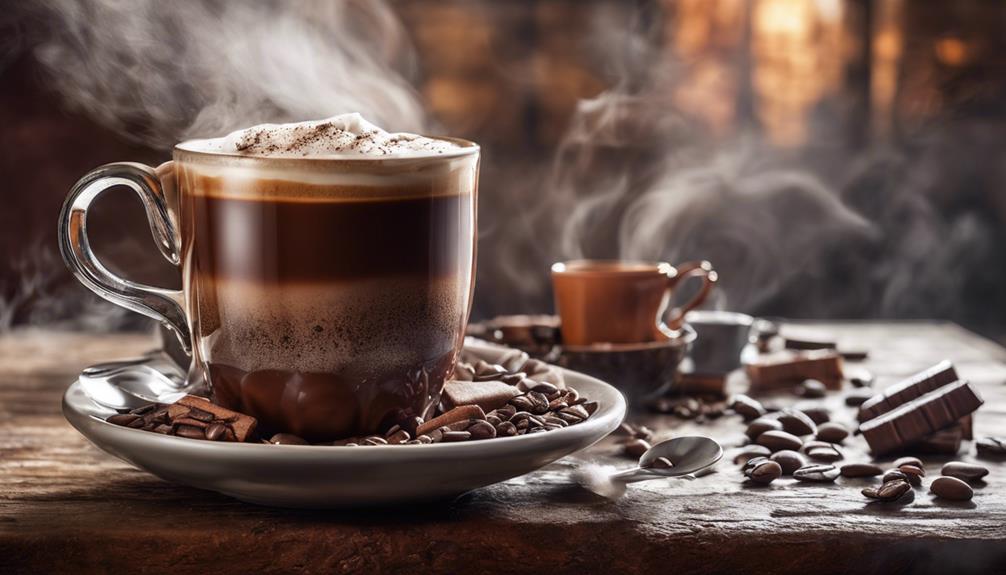
When comparing the caffeine levels in cocoa and coffee, it is important to understand that cocoa generally has lower caffeine content than coffee. Dark chocolate contains approximately 12 milligrams of caffeine per ounce, while hot cocoa typically ranges from 5 to 10 milligrams per ounce. In contrast, brewed coffee can have significantly higher levels, varying from 95 to 165 milligrams per 8-ounce cup.
Cocoa is considered a milder option for individuals aiming to limit their caffeine intake, with theobromine providing a gradual energy increase. Meanwhile, coffee's caffeine content offers immediate alertness, and understanding these distinctions can help you select based on your preferred effects.
Key Takeaways
- Cocoa contains lower caffeine levels but compensates with theobromine for a gradual energy increase.
- Coffee has higher caffeine content, offering an immediate alertness boost and potentially higher metabolic rate.
- Theobromine in cocoa promotes relaxation, while caffeine in coffee provides intense alertness and mood fluctuations.
- Hot chocolate is a good option for reducing caffeine intake while still benefiting from theobromine effects.
- Understanding caffeine variances helps make informed choices for desired energy levels and mood effects.
Caffeine Levels in Cocoa Vs Coffee
When comparing caffeine levels in cocoa versus coffee, it's evident that cocoa generally contains lower amounts per serving. Dark chocolate, made from cacao beans, contains around 12 milligrams of caffeine per ounce, while a 1-ounce serving of hot cocoa mix typically has 5-10 milligrams. Even a 16-ounce serving of Starbucks hot chocolate only contains about 25 milligrams of caffeine.
On the other hand, coffee, when brewed, can range from 95 to 165 milligrams of caffeine per 8-ounce cup, depending on the type and brewing method. This significant difference in caffeine content between cocoa and coffee makes cocoa a milder option for those looking to limit their caffeine intake.
Impact on Alertness and Energy
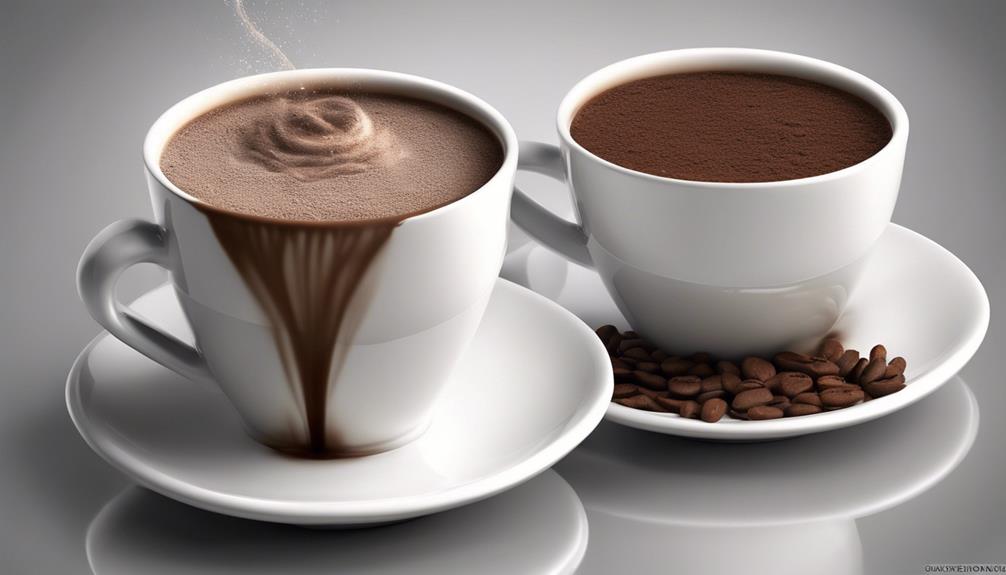
Typically, the immediate alertness and energy boost from caffeine in coffee can last for hours. This surge in alertness is due to caffeine's stimulating effect on the central nervous system. On the other hand, cocoa contains theobromine, which provides a more gradual increase in energy levels. Unlike caffeine, theobromine doesn't cause sudden spikes and crashes, offering a smoother energy curve.
Coffee's caffeine content can temporarily boost the metabolic rate, potentially supporting weight management efforts. This increased metabolic rate can aid in burning calories and may contribute to weight loss when combined with a balanced diet and regular exercise. Additionally, theobromine in cocoa contributes to the thermogenic effect, leading to mild calorie burning in the body.
Both caffeine and theobromine can influence mood. Caffeine tends to provide a more intense and quick-acting mood elevation, while theobromine promotes feelings of relaxation and contentment. Understanding the differences in alertness, energy, metabolic effects, and mood enhancements between cocoa and coffee can help individuals make informed choices based on their preferences and wellness goals.
Metabolic Variances and Effects
Regarding metabolic variances and effects, the varying caffeine levels between cocoa and coffee play a significant role. When comparing the metabolic impact of caffeine in cocoa and coffee, it is crucial to note that cocoa contains lower levels of caffeine but compensates with theobromine, which aids in the thermogenic effect, promoting calorie burning and metabolic activity. On the other hand, coffee, especially brewed varieties, contains higher levels of caffeine, potentially providing a temporary boost to the metabolic rate, which could assist in weight management. While caffeine in coffee offers a quick energy surge, theobromine in cocoa leads to a more gradual rise in energy levels, avoiding sudden spikes and crashes. To summarize the metabolic differences, I've created a table below:
| Aspect | Cocoa | Coffee |
|---|---|---|
| Caffeine Content | Lower levels | Higher levels |
| Additional Component | Theobromine | Caffeine |
| Metabolic Impact | Thermogenic effect | Temporary metabolic rate boost |
| Energy Levels | Gradual rise | Quick surge |
| Weight Management | Aids in calorie burning | Potential assistance |
Mood Enhancement Disparities

In comparing the mood enhancement effects of theobromine in cocoa and caffeine in coffee, notable disparities emerge in their impact on mental well-being.
The theobromine found in cocoa promotes relaxation and contentment, offering a gradual rise in energy levels that leads to a gentle and long-lasting mood enhancement experience.
On the other hand, caffeine delivers an intense and fast-acting boost in alertness, providing immediate energy levels that can lead to abrupt spikes and crashes.
While both theobromine and caffeine uplift mood, theobromine's effects are characterized by a steady and gradual increase in energy levels, creating a sense of calm and contentment.
In contrast, caffeine's impact is more intense and temporary, resulting in rapid alertness but also the potential for fluctuations in mood. Understanding these differences can help individuals choose between cocoa and coffee based on their desired mood enhancement effects.
Health Implications and Considerations
Health implications and considerations surrounding caffeine consumption warrant close attention due to its potential impact on various aspects of well-being. When comparing a cup of coffee to hot chocolate, it's vital to note the amount of caffeine present.
While coffee contains much caffeine, hot chocolate has less caffeine but isn't entirely devoid of it. The main active ingredients in hot chocolate are theobromine and caffeine, where theobromine is a relative of caffeine and also has stimulant effects, although milder. If you're looking to reduce your caffeine intake, opting for hot chocolate over a cup of coffee can be a good choice.
Being mindful of the caffeine content in chocolate products is important, especially if you're sensitive to caffeine or belong to vulnerable populations like children or pregnant women. Understanding the caffeine levels in different beverages allows you to make informed decisions about your consumption for better overall health.
Frequently Asked Questions
Is There Caffeine in Coffee Vs Cacao Powder?
Yes, there is caffeine in coffee, with around 140 milligrams in a 12-ounce cup. On the other hand, cacao powder contains only about 12 milligrams per tablespoon, making it a great caffeine-free alternative for those seeking a milder boost.
What Is the Difference Between Cocoa and Coffee?
When comparing cocoa and coffee, cocoa offers a rich, chocolatey flavor and is packed with antioxidants and minerals. Coffee, on the other hand, provides a robust, bitter taste and a jolt of caffeine for that morning pick-me-up.
Why Is Cocoa Better Than Coffee?
I believe cocoa is superior to coffee because it offers a gentler energy boost, promotes relaxation and contentment, and provides sustained vitality without sudden crashes. Plus, dark chocolate's theobromine supports cellular health and tastes delicious.
How Much Caffeine Is in Cocoa Powder Vs Decaf Coffee?
In cocoa powder vs decaf coffee, cocoa has 12-26mg of caffeine per tbsp, while decaf coffee holds 2-5mg per 8-ounce cup. The choice hinges on desired caffeine levels and flavor. I prefer cocoa's lower caffeine content.
How does the caffeine content in hot chocolate compare to coffee?
Hot chocolate caffeine content is significantly lower than that of coffee. While an 8-ounce cup of hot chocolate contains about 5-10 milligrams of caffeine, the same size of coffee can have anywhere from 95-200 milligrams. It’s a notable difference for those looking to limit their caffeine intake.
Conclusion
To sum up, while cocoa and coffee both contain caffeine, the levels vary significantly. Cocoa generally has lower caffeine content compared to coffee, impacting alertness, energy levels, and mood enhancement differently.
It's crucial to keep these differences in mind when choosing between the two beverages for your daily consumption. Remember, moderation is key to maintaining a healthy balance in your caffeine intake.
So, whether you prefer a cup of cocoa or a mug of coffee, enjoy it in moderation for the best benefits!
Rachael, the Editor in Chief of RachaelsRawFood.com, is an inspiring and passionate individual who has dedicated her life to promoting the benefits of a raw food lifestyle. Known for her vibrant and energetic personality, Rachael has built a strong online presence that has transformed her personal journey into a thriving community of raw food enthusiasts.
Raw Food Ingredients
A Guide to Becoming a Good King
Kingship demands wisdom, fairness, integrity, courage, and humility – essential traits for a successful reign and prosperous kingdom." Keep reading to uncover the secrets of becoming a good king.

In order to be a good king, one must embody wisdom, fairness, integrity, courage, and humility to lead the kingdom with honor. Wisdom is essential for making important decisions, fairness ensures just treatment for all, integrity builds trust and respect, courage is crucial for facing challenges, and humility reminds us of our humanity. Historical kings such as Solomon, Arthur, David, Charlemagne, and Ramses II serve as role models for these leadership traits.
As a king, embracing challenges, understanding the world, seeking personal growth, and learning from the past are essential responsibilities. Developing leadership skills, making wise decisions, and prioritizing the well-being of the people are key to effective kingship. Every step on the path to becoming a good king is critical for a successful reign and prosperous kingdom.
Key Takeaways
- Embrace wisdom for informed decisions.
- Practice fairness for just treatment.
- Uphold integrity to earn trust.
- Show courage in facing challenges.
- Maintain humility for empathy and respect.
Qualities of a Good King
Being a good king requires embodying qualities such as wisdom, fairness, integrity, courage, humility, and compassion in decision-making and leadership. Power comes with responsibility, and as a king, it's essential to wield this power wisely. Wisdom is vital in making sound judgments that benefit the kingdom as a whole. Fairness guarantees that all subjects are treated justly and equitably, fostering a harmonious society. Integrity is the foundation of trust and respect, key elements in effective leadership.
Courage is necessary to face challenges and make difficult decisions, even when met with opposition. Humility reminds a king of his humanity and the importance of humility in interactions with all subjects. Compassion demonstrates a king's care and empathy towards his people, fostering a sense of unity and loyalty. Effective communication is crucial for conveying decisions, listening to concerns, and inspiring confidence in leadership.
Historical Kings as Role Models

King Solomon, renowned for his wisdom and leadership, stands as an exemplar among historical kings who serve as role models for future leaders. Looking at figures like King Arthur, known for his justice and valor in medieval legends, and King David, celebrated for his faith and courage in battle, we find lessons that transcend time. Charlemagne's legacy of military conquests and cultural revival, alongside Ramses II's grand building projects and military campaigns, offer diverse insights into effective kingship. Below is a table summarizing key attributes of these historical kings:
| King | Attributes |
|---|---|
| King Solomon | Wisdom, leadership |
| King Arthur | Justice, valor |
| King David | Faith, courage |
| Charlemagne | Military prowess, culture revival |
| Ramses II | Building projects, military campaigns |
Studying these historical figures can provide valuable lessons on the multifaceted qualities that make a great ruler.
Responsibilities of Kingship
Embracing challenges and living authentically are central to fulfilling the responsibilities inherent in kingship. As men aspiring to be good kings, it's essential for us to understand that the world requires leaders who are kind, humble, and committed to personal growth.
The journey to becoming a good king involves more than just wielding power and responsibility—it entails sacrificing comfort for growth and transformation. Seeking the ancient path of masculinity, as exemplified by figures like Morgan, teaches us the importance of humility, vulnerability, and character development.
In fulfilling the responsibilities of kingship, we're entrusted with power not for our own gain, but for the betterment of the world around us. Just as seeds need Good Soil to flourish, we must nurture our own growth to lead effectively.
Leadership Skills for Kings

Developing essential leadership skills is crucial for aspiring kings seeking to fulfill their responsibilities with humility, vulnerability, and a focus on character development. As you study the world around us, the power and responsibility of what kingship entails become clearer. Here are some key points to think about on your path to becoming a king:
- Embrace challenges and live authentically.
- Seek ancient paths of masculinity for guidance.
- Reflect on your identity, purpose, and ability to be entrusted with power for good.
- Sacrifice comfort for growth, transformation, and participation in universal creativity.
The journey of becoming a king isn't just about gaining authority but about understanding the remarkable fellowship of like-hearted individuals who share similar goals. Engage in group discussion questions, consider between-session personal study, and explore the depths of your masculine soul. This is the path to restoring what it means to be a true king.
Importance of Wise Decision-Making
Steering through the intricacies of leadership, especially in the domain of kingship, requires a sharp focus on the art of prudent decision-making. Wise decision-making is like the compass guiding the ship of leadership towards success.
Good kings understand that their choices impact not just themselves but also the lives of those they rule over. They prioritize the well-being of their people over personal gains, embodying the essence of true leadership.
Seeking counsel from trusted advisors and reflecting on core values are essential practices in the domain of wise decision-making. By embracing humility and self-awareness, kings can navigate the complex web of choices with clarity and integrity.
Just like a six-session video Bible study can guide individuals in restoring the heart, wise decision-making is essential for becoming the kind of leaders our world needs. Let's start on this journey of radical reconstruction, where every decision is a step towards being counted among the good kings of history.
Frequently Asked Questions
What Is the Becoming a King Guide?
The Becoming a King guide is a transformative resource created by Morgan Snyder to help men grow into responsible kings. It offers practical tools and profound insights to aid personal development and transformation.
What Are the Qualities of a Good King?
Being a good king means embodying humility, wisdom, and integrity. Prioritizing the well-being of my people, making decisions for the greater good, and showing courage, justice, and compassion in all actions. Seeking counsel and valuing diverse perspectives is essential.
What Makes a True King?
Beneath the crown lies a heart that beats with humility and a spirit that soars with honor. True kings are forged in the fires of challenge, embracing authenticity and growth to inspire others.
What Makes a Real King?
Being a true king means embodying humility, courage, and empathy. It's about serving others and leading with integrity. I endeavor to cultivate these qualities daily, embracing challenges and seeking growth in all aspects of my life.
How Can Sacred Cacao be Incorporated Into Kingship Rituals?
In kingship rituals, the sacred cacao ritual holds great significance. The ceremonial drinking of cacao symbolizes the divine connection between the ruler and the spiritual realm. It is believed to impart wisdom and strength, making it a crucial element in the coronation and leadership rites of many cultures.
Conclusion
To sum up, becoming a good king requires a combination of qualities, skills, and responsibilities. Remember, 'With great power comes great responsibility.'
By studying historical kings as role models, practicing leadership skills, and making wise decisions, one can aspire to be a just and effective ruler.
It's a challenging path, but with dedication and perseverance, anyone can endeavor to be a worthy leader for their kingdom.
Rachael, the Editor in Chief of RachaelsRawFood.com, is an inspiring and passionate individual who has dedicated her life to promoting the benefits of a raw food lifestyle. Known for her vibrant and energetic personality, Rachael has built a strong online presence that has transformed her personal journey into a thriving community of raw food enthusiasts.
-

 Raw Food Ingredients2 months ago
Raw Food Ingredients2 months agoHow To Make Hot Chocolate With Raw Cacao Powder
-

 Raw Food Ingredients2 months ago
Raw Food Ingredients2 months agoHow To Make Chocolate From Raw Cacao
-

 What is Raw Food?2 weeks ago
What is Raw Food?2 weeks agoHow To Remove Raw Mustard Oil Smell From Cooked Food
-

 Raw Food Ingredients4 weeks ago
Raw Food Ingredients4 weeks agoRaw Cacao Powder How Much For 8 Oz Hot Chocolate Recipe
-
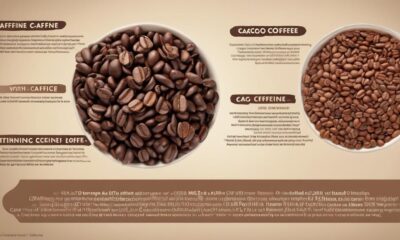
 Raw Food Ingredients4 weeks ago
Raw Food Ingredients4 weeks agoThe Truth Behind the Cacao Caffeine Myth
-
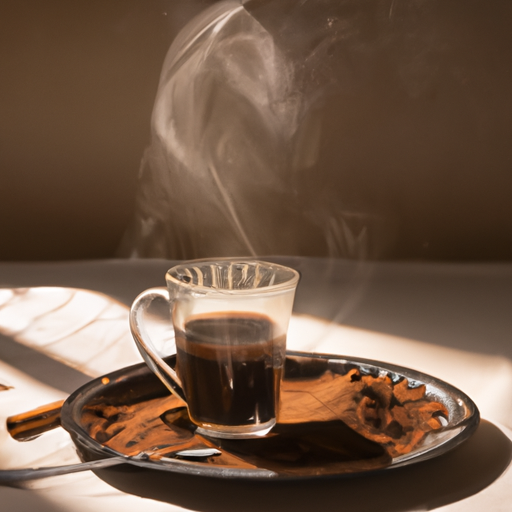
 Raw Food Ingredients2 months ago
Raw Food Ingredients2 months agoWhen Fasting Can I Drink Coffee With Raw Cacao Powder
-

 What is Raw Food?2 weeks ago
What is Raw Food?2 weeks agoHow To Store Raw And Cooked Food Separately
-

 Raw Food Ingredients2 months ago
Raw Food Ingredients2 months agoHow To Use Raw Cacao Beans




